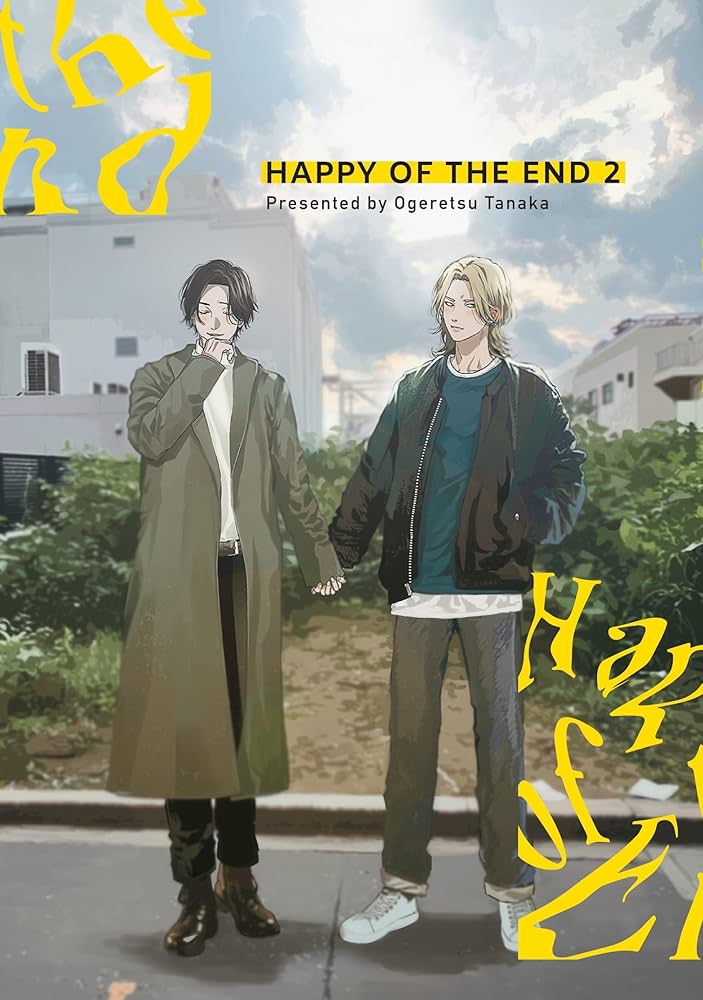By Ciera Terry
“Happy of the End” is a manga created by Ogeretsu Tanaka that was later adapted into a series in Japan directed by Furumaya Tomoyuki. The live action television drama broadcasted on Fuji TV from Sept. 3-24, 2024. “Happy of the End” covers mature themes such as homelessness, rape, sexual assault, child sex trafficing, post-traumatic stress disorder (PTSD), and the reality of living as a gay man in japan.
Combined with its stunning visuals and well crafted storylines around trauma, “Happy of the End” created a solemn atmosphere for its audience. The director nor the actors held back in terms of realistically showing what it’s like to survive a traumatic childhood and what it’s like for that trauma to influence a person into adulthood.
“Happy of the End” captures the horrific truth of children sentenced to a life they did not ask for, then as an adult, forever trying to find the traces of themselves untouched by that violence. These conflicting identities all blend together, causing an infinite loop of almost catching up to some form of contentment with what happened to them, but ultimately never being able to accept who they truly are, causing the shame from that trauma to claim not only their body but their mind as well.
The storyline revolves around Keito and Chihiro, two men who meet in a basement bar.
Chihiro is recently homeless, there to seek comfort while still grappling with his long-term boyfriend breaking up with him to marry a woman. Keito is there to target Chihiro, who has stolen a wallet from a brothel he’d stayed in.
Chihiro approached Keito attempting to spend the night with him, but unbeknownst to Chihiro, Keito planned to regain what was stolen and beat Chihiro up for his actions.
The next morning, Chihiro awakes on a pile of garbage with Keito standing above him. As Keito realizes the wallet is long gone, he planned to leave Chihiro behind, but Chihiro, desperate for some sort of stability and temporary comfort, begged Keito to keep his promise of sleeping with him, even if Keito’s earlier advances were ill-intended.
This began the start of a conditional relationship between the two: Keito keeping Chihiro around as long as he’s useful, and Chihiro intent on staying as long as Keito allowed it, both of them with deep and traumatic pasts, learning to experience life through each other.
Keito, whose real name is later revealed as Haoran, was a victim of a child sex trafficking ring, abandoned by his mother at a young age and Chihiro has struggled homelessness since his teenage years, after being kicked out of his house after his father discovered he was gay.
Neither Chihiro or Keito are perfect; both grew up under terrible conditions that left them flawed, but I found Haoran’s childhood in particular incredibly disturbing.
As the series goes on, the audience learns more about Keito’s past after Chihiro sees him give money to an older woman. This woman turns out to be Keito’s mother, a woman who no longer remembers Keito after being physically beaten and left mentally impaired.
The audience learns that for the past couple of months, after they reunited, Keito routinely gives her money in order for her to act like she remembers him, his value hanging on to the one and only memory in which she protected him as a child.
His story is tragic. The older he got, the less value he had–which means the more disposable he became. As an older teen, he began to be used for aggressive “customers.” Because of this, he would repeatedly end up in a run-down clinic, and by this time, all of the other children had either run away or were sold off.
Alone and disposable, Keito watched as his life became just as insignificant as he had felt his whole life. It was only after almost dying for a second time that he ran away.
Alternatively, Chihiro grew up surrounded by family, but was kicked out when they discovered his sexuality and lived in unstable conditions, working odd jobs to survive.
After the incident with his ex-boyfriend, Chihiro wanted one thing: love. He didn’t seem to care in what ways he got it, whether that meant being used or bought, as long as he had someone next to him.
That’s why he had stayed with his ex-boyfriend for so long; even with his complicated relationship with Keito, Chihiro stayed. But Chihiro saw something inside Keito when he met him: he saw something tragic but something beautiful. He had wanted to get close to him, even if that meant getting hurt.
Two people who are far from perfect found some form of solace within each other, in ways that society might not deem healthy or stable. but in a way that kept them both alive. And being alive, but with each other, was the only way either of them could find value or purpose in this lifetime.

